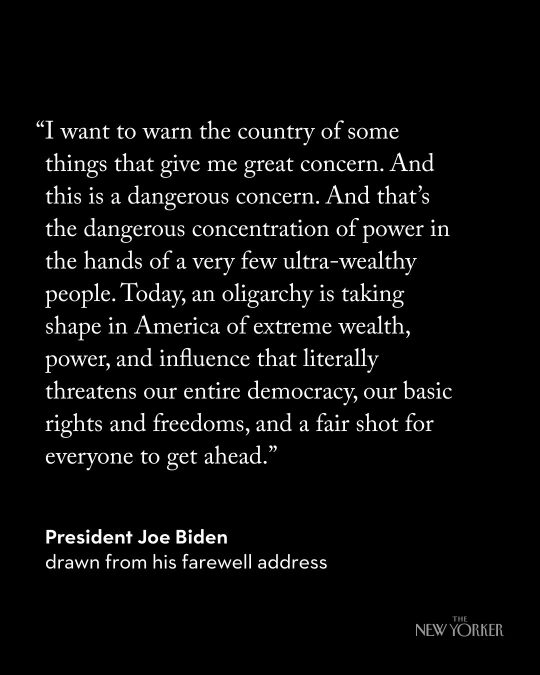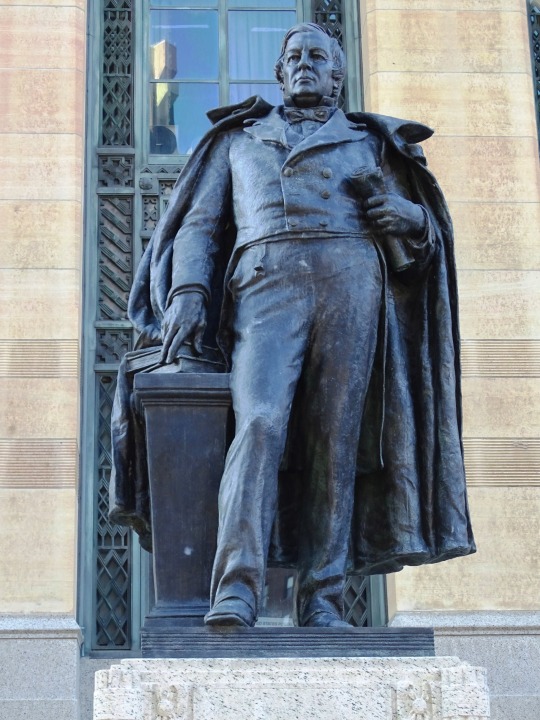#inauguration 2009
Explore tagged Tumblr posts
Photo

(via GIPHY) President Joe has kept every promise he made. America is open! He passed the largest green infrastructure investments in our history. 14 million jobs. 75% of our population vaccinated! misterlemonztenth.tumblr.com/archive
15 notes
·
View notes
Text


John F. Kennedy was inaugurated the 35th President of the United States of America on January 20, 1961, becoming the youngest man to be elected into that office, and the first Catholic.
#Isabel McIlvain#John F. Kennedy#inaugurated#35th US President#Boston#20 January 1961#anniversary#US history#sculpture#public art#travel#Massachusetts#Massachusetts State House#New England#summer 2009#original photography#cityscape#architecture#tourist attraction#landmark#US Capitol#Washington DC#vacation#USA
3 notes
·
View notes
Text










Beastie Boys at inauguration concert for Obama in at the 9:30 club in Washington DC, January 2009.
Photos by Dakota Fine
27 notes
·
View notes
Text

1 note
·
View note
Text
”there has been a dire shortage of trained air traffic controllers for years”
“the FAA director resigned on inauguration day because Elon Musk demanded he quit”
“trump’s hiring freeze means no new air traffic controllers are being hired”
“Musk’s ‘resign or get fired’ email went to every ATC too”
First deadly commercial air crash in the US since 2009 occurs
“It’s because of DEI!”
holy shit fuck off
14K notes
·
View notes
Text
youtube
Air and Simple Gifts, John Williams || Obama Inauguration, 2009
0 notes
Text
4th Worst Post Inaugural S&P 500 Performance since WWII

Click here to view table full size…
President Trump’s fast and furious pace of change to kick off his second term has created a great deal of uncertainty. Historically, the market has not performed well during periods of uncertainty. Monday, March 10, marked the seven weeks since Inauguration Day and as of the close S&P 500 was down 6.37%, its fourth worst post inaugural performance since 1945. Presidents Obama (2009), W. Bush (2001) and Ford (1974) suffered greater declines through the seventh week.
In the above table we have included the S&P 500’s performance every Inauguration Day since April 12, 1945, when Truman became President following the death of FDR. We also included November 1963, when Johnson took over after JFK was assassinated and Ford in August 1974, following Nixon’s resignation. We use the close on Inauguration Day or the day before when it landed on a holiday like this year. Republican Administrations are shaded in grey.
Seven weeks may be an odd data point to consider but it is consistent with the current time frame. Looking out to 12-Weeks After and 100-Days After, we see an improvement in S&P 500 performance with average, median and frequency of gains improving. Should the market find support, a rebound would be consistent with past post inaugural performance.
157 notes
·
View notes
Text
US interference in European elections largely began with the manipulation of Italy’s 1948 election by spreading propaganda, fabricating grassroots initiatives and funding their preferred candidates to ensure the electoral defeat of the political Left. The successful Italian election interference operation of 1948s became a “template” that would be replicated (Shimer, 2020). Towards the end of the Cold War, greater steps were taken to manipulate the politics of foreign nations by constructing “private” international non-governmental organisations (NGOs), which could conceal and legitimise actions by intelligence agencies. The label “non-governmental” organisations are very deceptive as they are almost completely funded by the government, often staffed by people connected to the government and intelligence agencies, and pursue the strategic objectives of the government. [...]
NED was created in 1983 as a private organisation, inaugurated by President Ronald Reagan and funded by the US Congress. Covert operations were instead made overt under the legitimacy of democracy and freedom. As Reagan argued in the inauguration ceremony of NED: “This program will not be hidden in shadows. It’ll stand proudly in the spotlight, and that’s where it belongs. We can and should be proud of our message of democracy”. Allen Weinstein, a co-founder of NED, acknowledged that “a lot of what we do today was done covertly 25 years ago by the CIA” (Ignatius, 1991 ). [...]
By the late 1980s, NED began providing funding to anti-communist groups behind within the Soviet bloc. Washington Post reporter David Ignatius (1991) argued that NED has been the “sugar daddy of overt operations” in which Washington can support regime change under the auspices of “democracy promotion”, paramilitary operations under the guise of backing “freedom fighters”, and “what used to be called ‘propaganda’ and can now simply be called information”. [...]
James Woolsey (2005), a former CIA Director and former head of Freedom House, explained that Freedom House contributed to “help bring about a movement toward democracy in Ukraine” during the Orange Revolution. The Guardian described the Orange Revolution in Ukraine as “an American creation, a sophisticated and brilliantly conceived exercise in western branding and mass marketing”, which replicated the template of “winning other people’s elections” as had been done in Serbia and Georgia (Traynor, 2004). Another article by the Guardian referred to the Orange Revolution as a “postmodern coup d’état” and a “CIA-sponsored third world uprising of cold war days, adapted to post-Soviet conditions” (Steele, 2004). [...]
Gleb Pavlovsky, an advisor to Putin’s administration, argued that the Orange Revolution engineered in Ukraine “was a very useful catastrophe for Russia” as Moscow learned from the interference: “It very quickly became clear that they [the West] would try to export this to us and that we should prepare for this, and very quickly strengthen our political system” (Popescu & Wilson, 2009: 29). The same government-funded NGOs were involved in the Arab Spring, at which point in time US Senator John McCain tweeted on 5 December 2011 a direct threat to Moscow: “Dear Vlad, the Arab Spring is coming to a neighbourhood near you”. Carl Gershman (2016), the president of NED, similarly advocated that the US government should “summon the will” to carry out regime change in Russia. On its website, NED also lists how it spends millions of dollars annually in Russia to fund activities such as “engaging activists” and “fostering civic engagement” (Shane, 2018 ).
Russophobia: Propaganda in International Politics by Glenn Diesen.
104 notes
·
View notes
Text








Historical Indigenous Women & Figures [6]:
Queen Nanny: the leader of the 18th century Maroon community in Jamaica, she led multiple battles in guerrilla war against the British, which included freeing slaves, and raiding plantations, and then later founding the community Nanny Town. There are multiple accounts of Queen Nanny's origins, one claiming that she was of the Akan people from Ghana and escaped slavery before starting rebellions, and others that she was a free person and moved to the Blue Mountains with a community of Taino. Regardless, Queen Nanny solidified her influence among the Indigenous People of Jamaica, and is featured on a Jamaican bank note. Karimeh Abboud: Born in Bethlehem, Palestine, Karimeh Abboud became interested in photography in 1913 after recieving a camera for her 17th birthday from her Father. Her prestige in professional photography rapidly grew and became high demand, being described as one of the "first female photographers of the Arab World", and in 1924 she described herself as "the only National Photographer". Georgia Harris: Born to a family of traditional Catawba potters, Harris took up pottery herself, and is credited with preserving traditional Catawba pottery methods due to refusing to use more tourist friendly forms in her work, despite the traditional method being much more labour intensive. Harris spent the rest of her life preserving and passing on the traditional ways of pottery, and was a recipient of a 1997 National Heritage Fellowship awarded by the National Endowment for the Arts, which is the highest honor in the folk and traditional arts in the United States. Nozugum: known as a folk hero of the Uyghur people, Nozugum was a historical figure in 19th century Kashgar, who joined an uprising and killed her captor before running away. While she was eventually killed after escaping, her story remains a treasured one amongst the Uyghur. Pampenum: a Sachem of the Wangunk people in what is now called Pennsylvania, Pampenum gained ownership of her mother's land, who had previously intended to sell it to settlers. Not sharing the same plans as her mother, Pampenum attempted to keep these lands in Native control by using the colonial court system to her advantage, including forbidding her descendants from selling the land, and naming the wife of the Mohegan sachem Mahomet I as her heir. Despite that these lands were later sold, Pampenum's efforts did not go unnoticed. Christine Quintasket: also known as "Humishima", "Mourning Dove", Quintasket was a Sylix author who is credited as being one of the first female Native American authors to write a novel featuring a female protagonist. She used her Sylix name, Humishima, as a pen name, and was inspired to become an author after reading a racist portrayal of Native Americans, & wished to refute this derogatory portrayal. Later in life, she also became active in politics, and helped her tribe to gain money that was owed them. Rita Pitka Blumenstein: an Alaskan Yup'ik woman who's healing career started at four years old, as she was trained in traditional healing by her grandmother, and then later she became the first certified traditional doctor in Alaska and worked for the Alaska Native Tribal Health Consortium. She later passed on her knowledge to her own daughters. February 17th is known as Rita Pitka Blumenstein day in Alaska, and in 2009 she was one of 50 women inducted into the inaugural class of the Alaska Women's Hall of Fame Olivia Ward Bush-Banks: a mixed race woman of African American and Montaukett heritage, Banks was a well known author who was a regular contributor to the the first magazine that covered Black American culture, and wrote a column for a New York publication. She wrote of both Native American, and Black American topics and issues, and helped sculptor Richmond Barthé and writer Langston Hughes get their starts during the Harlem Renaissance. She is also credited with preserving Montaukett language and folklore due to her writing in her early career.
part [1], [2], [3], [4], [5] Transphobes & any other bigots need not reblog and are not welcome on my posts.
578 notes
·
View notes
Text
Snake's birthday (March 15)
It is Snake's birthday in the year of the snake! Happy birthday, says Wordsworth, Emily, Goethe, Oscar, Wilde, Webster, Brontë, Donne, Keats, and Jonathan!




Celebrate by eating some good food surrounded by friends, cuddling (?) sheep, and reading a little bit of trivia^^
He has a forked tongue like a snake. This was first mentioned in the Character Guide (2009) but never shown until Chapter 208 (2024), 15 years later!


(Please excuse the bad scan^^')
He doesn't have a birth name, so Joker gave him the name "Snake"!

(From Chapter 208)
His mother was Sarah Kemble, an actress. (Chapter 209) Interestingly, "Kemble" is the name of a real-life British family of actors. One of its most famous members was Sarah Siddons (née Kemble) who lived from 1755 to 1831. (Yana once stated that she does not put much value on names when creating characters, but she also said she sometimes names them after historical people. [Translation] Maybe she picked the name deliberately?)
While Snake's snakes are all named after famous authors, he himself cannot read. Finnian used to teach him though (source). Jumbo named all his snakes because he was a reader (Chapter 208).
Snake is the only one of the Phantomhive servants whose birthday is known so far *stares into the distance* He and the others will get their time to shine in Season 5 which will start airing on April 5, 2025!

He gets to inaugurate his new bag too! (*acquired it in Episode 57/Chapter 85)

With friends inside :)
#kuroshitsuji#black butler#snake#kuroshitsuji snake#finnian#ciel phantomhive#baldroy#snake's snakes#kuroshitsuji spoilers#kuroshitsuji manga spoilers#black butler manga spoilers#black butler spoilers#birthday posts#(that one goose meme: why do we know his birthday?? WHY DO WE KNOW HIS BIRTHDAY???)#(Yana: You can know a character's birthday but only for a terrible price >:D)#(also sick of her to have him be born on the Ides of March)#(stabbed and betrayed AND March 15 birthday welcome back caesar (no))#(*definitely a coincidence)#also: happy ides of march!!! get your phantomhive high-quality silver knives out!!!
128 notes
·
View notes
Text
It’s crazy how long cas has been gay for. Considering they only let him say it in 2020 you’d think it’s a recent development surely something that was planted and grown in a rapid plot cycle that is so fast and unsustainable it rips all the nutrients from the soil rendering land unplantable for several years. But no. You can so easily watch an episode of supernatural filmed in 2009 the year Barack Obama was inaugurated in a DADT no federal gay marriage world . And cas is GAY. Cas is undeniably ideology shatteringly gay. DONT worry misha collins I saw you cut your eyes away from dean winchester lest you succumb to a charged look in front of your superiors leading you to get lobotomied into hating dean again
1K notes
·
View notes
Text

LETTERS FROM AN AMERICAN
January 16, 2025
Heather Cox Richardson
Jan 17, 2025
In his final address to the nation last night, President Joe Biden issued a warning that “an oligarchy is taking shape in America of extreme wealth, power, and influence that literally threatens our entire democracy, our basic rights and freedoms, and a fair shot for everyone to get ahead.”
It is not exactly news that there is dramatic economic inequality in the United States. Economists call the period from 1933 to 1981 the “Great Compression,” for it marked a time when business regulation, progressive taxation, strong unions, and a basic social safety net compressed both wealth and income levels in the United States. Every income group in the U.S. improved its economic standing.
That period ended in 1981, when the U.S. entered a period economists have dubbed the “Great Divergence.” Between 1981 and 2021, deregulation, tax cuts for the wealthy and corporations, the offshoring of manufacturing, and the weakening of unions moved $50 trillion from the bottom 90% of Americans to the top 1%.
Biden tried to address this growing inequality by bringing back manufacturing, fostering competition, increasing oversight of business, and shoring up the safety net by getting Congress to pass a law—the Inflation Reduction Act—that enabled Medicare to negotiate drug prices for seniors with the pharmaceutical industry, capping insulin at $35 for seniors, for example. His policies worked, primarily by creating full employment which enabled those at the bottom of the economy to move to higher-paying jobs. During Biden’s term, the gap between the 90th income percentile and the 10th income percentile fell by 25%.
But Donald Trump convinced voters hurt by the inflation that stalked the country after the coronavirus pandemic shutdown that he would bring prices down and protect ordinary Americans from the Democratic “elite” that he said didn’t care about them. Then, as soon as he was elected, he turned for advice and support to one of the richest men in the world, Elon Musk, who had invested more than $250 million in Trump’s campaign.
Musk’s investment has paid off: Faiz Siddiqui and Trisha Thadani of the Washington Post reported that he made more than $170 billion in the weeks between the election and December 15.
Musk promptly became the face of the incoming administration, appearing everywhere with Trump, who put him and pharmaceutical entrepreneur Vivek Ramaswamy in charge of the so-called Department of Government Efficiency, where Musk vowed to cut $2 trillion out of the U.S. budget even if it inflicted “hardship” on the American people.
News broke earlier this week that Musk, who holds government contracts worth billions of dollars, is expected to have an office in the Eisenhower Executive Office Building adjacent to the White House. And the world’s two other richest men will be with Musk on the dais at Trump’s inauguration. Musk, Amazon founder Jeff Bezos, and Meta chief executive officer Mark Zuckerberg, who together are worth almost a trillion dollars, will be joined by other tech moguls, including the CEO of OpenAI, Sam Altman; the CEO of the social media platform TikTok, Shou Zi Chew; and the CEO of Google, Sundar Pichai.
At his confirmation hearing before the Senate Committee on Finance today, Trump’s nominee for Treasury Secretary, billionaire Scott Bessent, said that extending the 2017 Trump tax cuts was "the single most important economic issue of the day." But he said he did not support raising the federal minimum wage, which has been $7.25 since 2009 although 30 states and dozens of cities have raised the minimum wage in their jurisdictions.
There have been signs lately that the American people are unhappy about the increasing inequality in the U.S. On December 4, 2024, a young man shot the chief executive officer of the health insurance company UnitedHealthcare, which has been sued for turning its claims department over to an artificial intelligence program with an error rate of 90% and which a Federal Trade Commission report earlier this week found overcharged cancer patients by more than 1,000% for life-saving drugs. Americans championed the alleged killer.
It is a truism in American history that those interested in garnering wealth and power use culture wars to obscure class struggles. But in key moments, Americans recognized that the rise of a small group of people—usually men—who were commandeering the United States government was a perversion of democracy.
In the 1850s, the expansion of the past two decades into the new lands of the Southeast had permitted the rise of a group of spectacularly wealthy men. Abraham Lincoln helped to organize westerners against a government takeover by elite southern enslavers who argued that society advanced most efficiently when the capital produced by workers flowed to the top of society, where a few men would use it to develop the country for everyone. Lincoln warned that “crowned-kings, money-kings, and land-kings” would crush independent men, and he created a government that worked for ordinary men, a government “of the people, by the people, for the people.”
A generation later, when industrialization disrupted the country as westward expansion had before, the so-called robber barons bent the government to their own purposes. Men like steel baron Andrew Carnegie explained that “[t]he best interests of the race are promoted” by an industrial system, “which inevitably gives wealth to the few.” But President Grover Cleveland warned: “The gulf between employers and the employed is constantly widening, and classes are rapidly forming, one comprising the very rich and powerful, while in another are found the toiling poor…. Corporations, which should be the carefully restrained creatures of the law and the servants of the people, are fast becoming the people's masters.”
Republican president Theodore Roosevelt tried to soften the hard edges of industrialization by urging robber barons to moderate their behavior. When they ignored him, he turned finally to calling out the “malefactors of great wealth,” noting that “there is no individual and no corporation so powerful that he or it stands above the possibility of punishment under the law. Our aim is to try to do something effective; our purpose is to stamp out the evil; we shall seek to find the most effective device for this purpose; and we shall then use it, whether the device can be found in existing law or must be supplied by legislation. Moreover, when we thus take action against the wealth which works iniquity, we are acting in the interest of every man of property who acts decently and fairly by his fellows.”
Theodore Roosevelt helped to launch the Progressive Era.
But that moment passed, and in the 1930s, Franklin Delano Roosevelt, too, contended with wealthy men determined to retain control over the federal government. Running for reelection in 1936, he told a crowd at Madison Square Garden: “For nearly four years you have had an Administration which instead of twirling its thumbs has rolled up its sleeves…. We had to struggle with the old enemies of peace—business and financial monopoly, speculation, reckless banking, class antagonism, sectionalism, war profiteering. They had begun to consider the Government of the United States as a mere appendage to their own affairs. We know now that Government by organized money is just as dangerous as Government by organized mob.”
“Never before in all our history have these forces been so united against one candidate as they stand today,” he said. “They are unanimous in their hate for me—and I welcome their hatred.”
Last night, after President Biden’s warning, Google searches for the meaning of the word “oligarchy” spiked.
LETTERS FROM AN AMERICAN
HEATHER COX RICHARDSON
#President Joe Biden#warning#political#oligarchy#Letters From An American#Heather Cox Richardson#income inequality#history#American History#FDR#Theodore Roosevelt#Robber Barrons
75 notes
·
View notes
Text


Millard Fillmore took office as vice president on 4 March, 1849.
#President Millard Fillmore by Bryant Baker#inaugurated#USA#Millard Fillmore#vice president#4 March 1849#175th anniversary#US history#Buffalo#New York#summer 2018#sculpture#cityscape#city hall#architecture#original photography#tourist attraction#landmark#White House#Washington DC#2009#travel#vacation
2 notes
·
View notes
Text










Beastie Boys at 9:30 Club in Washington DC, January 2009
📸 Dakota Fine
24 notes
·
View notes
Text
by Seth Mandel
In early 2009, the Atlantic’s Jeffrey Goldberg wrote a fiery post about the world’s “pornographic” obsession with anything that can be labeled Jewish moral failure. Goldberg specifically mentioned Hamas’s parading of dead Palestinian babies:
“Why are these pictures so omnipresent? I’ll tell you why, again from firsthand, and repeated, experience: Hamas (and the Aksa Brigades, and Islamic Jihad, the whole bunch) prevents the burial, or even preparation of the bodies for burial, until the bodies are used as props in the Palestinian Passion Play. Once, in Khan Younis, I actually saw gunmen unwrap a shrouded body, carry it a hundred yards and position it atop a pile of rubble — and then wait a half-hour until photographers showed. It was one of the more horrible things I’ve seen in my life. And it’s typical of Hamas. If reporters would probe deeper, they’d learn the awful truth of Hamas. But Palestinian moral failings are not of great interest to many people.”
I recount all this because—as Oct. 7, 2023 and its aftermath showed—the amount of support for Hamas and the obsession with demonizing the Jews, all with the willing collaboration of the media, is a song played on repeat. The details get worse, sure: Both Hamas and the Western media reached new depths of depravity in their own ways over these past 16 months. Hamas’s supporters in the West, meanwhile, gathered in celebration of evil in unprecedented numbers.
One does not want to believe that all or most of these people know what it is they are supporting. One does not want to believe that members of the media are aware of the egregious ethics breaches their outlets routinely engage in. One does not want to believe that the only way to put a stop to this long-running cycle of horror is to destroy Hamas.
But we are now nearly two decades into the era inaugurated by Hezbollah and Hamas in 2006. Supporters of Hamas didn’t abandon their cause when they saw Hamasniks dancing around with the dead bodies of captive children, because it’s what one expects of Hamas. News organizations didn’t institute reforms in 2006 precisely because they expected to be using those same tactics again and again. And Hamas itself is immune to change.
93 notes
·
View notes
Text
Cantor Jennifer Bern-Vogel was used to hearing her mother tell the story.
On the evening of Nov. 9, 1938, her mother, then Marianne Katzenstein, who was 16 at the time, was in her family’s synagogue in Bielefeld, Germany, practicing the organ. She finished up, used a key to lock the building and returned home. Later that night, the synagogue was burned to the ground by the Nazis in the Kristallnacht pogrom.
Only two items survived the fire: a Torah scroll and Katzenstein’s key.
“I just remember her talking about it, her voice would change and she was just kind of slower and softer and very nostalgic when she talked about the whole story,” Bern-Vogel, 67, said in an interview. “Whenever she told the story and then held up the key, people always — and I experienced it myself — there was always this kind of gasp.”
Bern-Vogel, who has been the cantor at Congregation Emanu El in Redlands, Calif., since 2009, said the story of the key was “legendary” in her family.
And on Saturday, 86 years after Kristallnacht, the key returned home.
Bern-Vogel spent the past week in Germany, where she had lived for more than a decade when she was younger, reconnecting with friends, family and the Jewish community of Bielefeld, where the synagogue was reestablished shortly after the Holocaust. It was her first trip to Bielefeld with her husband and daughter, and her brother and niece, as well as a cousin from Denmark, also flew in for the occasion.
On Friday night, Bern-Vogel and the cantor of the Bielefeld synagogue led Shabbat services together. Bern-Vogel sang a song that was adapted from a poem written by her grandfather, with music composed by a longtime friend from Germany.
And following Havdalah on Saturday, the town held a ceremony that began at the site of the destroyed synagogue before moving to City Hall, where the official hand-off was made. The key was added to the collection of the town’s history museum and will be on display at the current synagogue building.
According to Irith Michelsohn, the president of the town’s Jewish community and of Germany’s Progressive Jewish movement, Bielefeld’s Jewish community has 450 members. The synagogue the community uses now was renovated from an old Protestant church and was inaugurated in 2008.
Prior to the Holocaust, Bielefeld was home to almost 1,000 Jews, Michelsohn said. The community has been revitalized since Michelsohn took the helm on Jan. 1, 2000, at which point she said there were only 35 members.
Michelsohn said the key’s return is immensely meaningful to the community.
“I was so excited, because we only have one Torah scroll, and now the key, that’s all we have from our old synagogue,” Michelsohn said. “And now the key is back. That’s so great, you can’t imagine.”
Michelsohn said the key is especially important as a vehicle to educate the current community about its past. She explained that like many German Jewish communities, Bielefeld’s Jews are almost all originally from the former Soviet Union.
“You don’t have many people who are originally from Germany,” she said. “Some of them converted to Judaism, some immigrated from Israel or other countries or are working in Bielefeld with a university, but most of the members in all of our 120 Jewish communities in Germany are from the former Soviet Union.”
The key, Michelsohn said, represents an opportunity to “teach them something about history, about the past, what we lost.”
It also returns a physical reminder of the old synagogue building, which had been built in 1905 and was commissioned by the Katzenstein family. Bern-Vogel’s maternal grandfather had been the head of the Jewish community, and helped hundreds of families escape Germany.
“It symbolizes a connection to the old and very, very nice building which we had,” Michelsohn said, adding that the destroyed synagogue was “such a marvelous building.”
Like the key she kept, the remarkable story of Bern-Vogel’s mother did not end in 1938. The following year, she and her younger sister escaped to England on the Kindertransport. Years later, she was at a Shabbat dinner in Israel when she met Julian Bernstein (later shortened to Bern), Bern-Vogel’s father, who also survived the Holocaust.
Julian was one of six children from a Lithuanian family, but only he and one brother survived the Holocaust. That brother, Leon Bernstein, and Bern-Vogel’s mother were both working for the World Jewish Congress; Leon hosted the Shabbat dinner where Julian and Marianne met.
The two were engaged within a week, and eventually settled in Iowa, where Bern-Vogel and her brother were raised.
In the later years of her mother’s life, Bern-Vogel said there had been efforts to bring the key to the United States Holocaust Memorial Museum in Washington, D.C. But a contact her mother had at the museum passed away, and in 2017, so did she, at 94 years old.
“It just held a very deep connection,” Bern-Vogel said, referring to the key, a copy of which she still has. “I don’t think I thought about, when we were growing up, that the key would be anywhere else but with us. It kind of belonged to us.”
But as her mother aged, Bern-Vogel said her family wanted to determine where the key should go to be best taken care of and hold the most meaning. After a couple recent trips to Germany, Bern-Vogel said the answer crystallized.
“It just became clearer over the last couple of years, and especially after I went there last summer to meet with them at the synagogue and the museum, that it would really mean the most for everyone and future generations for it to be there,” she said.
Bern-Vogel said that even though her mother had a fraught relationship with Germany because of how her family’s time there ended, Bielefeld will always be their home. And she knows her mother would appreciate knowing that the key has made it back.
“I think that she would be incredibly moved by the reception that the key is going to have, and the people that are involved in the city,” Bern-Vogel said. “I think she would be very honored and happy, and I think grateful.”
94 notes
·
View notes